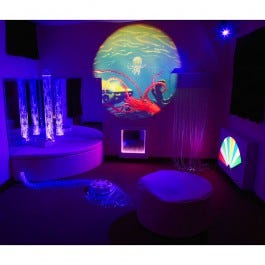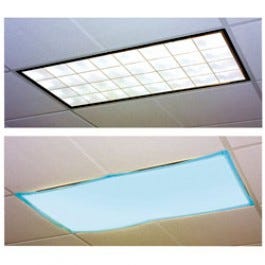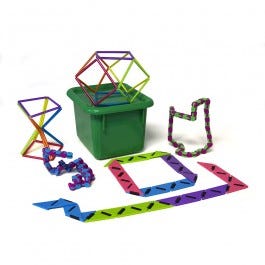by Raymond T. Heipp. Ph.D.
 This past August, I was reminded that this was the 15thanniversary of the electrical blackout that affected the East Coast and parts of the Midwest. I can vividly remember what I was doing during those days. The power went out just as I was beginning a multi-day training for new faculty members coming into my high school. Of course, the first comment someone made was “did you guys forget to pay the bill?” I was tempted to get rid of that rookie for making such a lame joke and showing no real creativity there.
This past August, I was reminded that this was the 15thanniversary of the electrical blackout that affected the East Coast and parts of the Midwest. I can vividly remember what I was doing during those days. The power went out just as I was beginning a multi-day training for new faculty members coming into my high school. Of course, the first comment someone made was “did you guys forget to pay the bill?” I was tempted to get rid of that rookie for making such a lame joke and showing no real creativity there.Needless to say, the next few days were interesting. We still had the training but altered where and how it was done. I completely understood that we would have to delay any training on technology or academic online systems but didn’t understand the presenters who could not present without their PowerPoint slides. I think the new faculty came to understand that adjustments can be made no matter what the situation when we did things like having a peripatetic discussion on teaching methodologies one morning around the neighborhood and having our “fancy dinner” change into grilled burgers and salad. There is definitely a lesson to be learned from this as some adjusted easily and others experienced difficulties.
I hope that you do not experience any electrical blackouts throughout this year! My greater concern though focuses on classrooms and buildings which create sensory overload for our students. We must be aware that every human being has sensory needs and triggers as we put together our classrooms and the activities within them. We also are reaching a time where I am seeing more schools adding a “sensory room” for student use.
Sensory rooms are good for all students and not just those with differing abilities. We need to understand that a good sensory room varies from school-to-school. I have seen schools and institutions which have put in $50,000 Snoezelen Rooms which work very well. But as a former administrator, I recognize that very few of our schools have that type of a budget for sensory. So how does one go about creating a good sensory room? Talk to others who have them and then talk to those who can help you make them a reality. A good sensory room can be designed inexpensively and effectively as long as you know what you are looking to accomplish and are not seeking the quick and cheap way out.
 There are sensory room kits that have many of the items you might need to create a sensory room. First you need to determine what kind of a room you want. Do you want it simply to be calming or be calming and interactive? When I say interactive, I refer to the fact that the user can actually dictate color schemes and devices to be used as they calm down. A sensory room that gives this control to the user is available for less than $18,500. The items in those kits include things like Bubble Tubes, Fiber Optic Showers, LED Sensory Projectors, and Fiber Optic Star Carpets. All of these can be purchased individually too which makes it easier to manage. Calming Sensory Room kits can be purchased for less than $8000. The difference with these kits is that the users cannot dictate color schemes or how things will flow within the room. Either way, these items can bring students on the verge of a meltdown to a more calmed demeanor quickly.
There are sensory room kits that have many of the items you might need to create a sensory room. First you need to determine what kind of a room you want. Do you want it simply to be calming or be calming and interactive? When I say interactive, I refer to the fact that the user can actually dictate color schemes and devices to be used as they calm down. A sensory room that gives this control to the user is available for less than $18,500. The items in those kits include things like Bubble Tubes, Fiber Optic Showers, LED Sensory Projectors, and Fiber Optic Star Carpets. All of these can be purchased individually too which makes it easier to manage. Calming Sensory Room kits can be purchased for less than $8000. The difference with these kits is that the users cannot dictate color schemes or how things will flow within the room. Either way, these items can bring students on the verge of a meltdown to a more calmed demeanor quickly.I visited the STEPS Academy this summer and watched how they designed their sensory rooms. Each room was a different theme (space and under the sea). There were high tech and low-tech items in the rooms. They did have one of the Fiber Optic Star Carpets and it was fantastic to watch the children come in and just sit right down and decompress. For me, the critical piece to the design of a sensory room is knowing your students and what they like. STEPS is definitely aware of their students with their themes and assortment of items that stay within the theme while giving sensory input.
We need to carry this awareness into our classrooms too. Classrooms do not need to have Fiber Optics or Bubble Tubes, but they do need to be aware of sensory overload. Too many pictures and items on the walls can be distracting for any student and downright overwhelming for others. Be creative, just not Jackson Pollock as you put your room together. Have meaning and purpose to what is displayed. One can go into just about any Chemistry classroom and see the Periodic Table on the wall. That makes an impact on students and is not overwhelming (unless you don’t like Chemistry!) Also, watch the colors you are using. Keep the colors bright without being too distracting. Large areas of red or orange can become distracting for some students.
 The lighting can also be overwhelming. Many of our classrooms still use florescent bulbs in the ceiling. Consider getting Light Filters to place over them. The best light filter colors tend to be blue, green, and purple. Please be careful though. Just running to the store and getting cheap sheet sets or cloth is not the same as Light Filters. My favorite anecdote comes from a presentation I was giving on making classrooms sensory friendly and discussing Light Filters. I had a teacher stand up and say I was correct (always nice to hear!) She went on to describe how she had bought some material at her local Walmart and covered her lights. During the afternoon of the first day of school, she thought she smelled something burning. She looked up to see one of the pieces of material smoldering from the direct exposure to the lights.
The lighting can also be overwhelming. Many of our classrooms still use florescent bulbs in the ceiling. Consider getting Light Filters to place over them. The best light filter colors tend to be blue, green, and purple. Please be careful though. Just running to the store and getting cheap sheet sets or cloth is not the same as Light Filters. My favorite anecdote comes from a presentation I was giving on making classrooms sensory friendly and discussing Light Filters. I had a teacher stand up and say I was correct (always nice to hear!) She went on to describe how she had bought some material at her local Walmart and covered her lights. During the afternoon of the first day of school, she thought she smelled something burning. She looked up to see one of the pieces of material smoldering from the direct exposure to the lights. Finally, as you prepare for your own classes, build in sensory breaks. OTs will share with you that a simple one-minute break can reinvigorate students and allow better attention to take place in ALL students. Consistent sensory breaks can also create a positive learning environment with limited issues from students. For the kinesthetic student, these breaks can actually increase the learning of material.
Finally, as you prepare for your own classes, build in sensory breaks. OTs will share with you that a simple one-minute break can reinvigorate students and allow better attention to take place in ALL students. Consistent sensory breaks can also create a positive learning environment with limited issues from students. For the kinesthetic student, these breaks can actually increase the learning of material.Sensory overload can occur in anyone, not just students with sensory processing issues or differing abilities. By taking some time to make a classroom sensory friendly, you can add depth to the learning process. A sensory-friendly classroom can also make you feel more relaxed in front of your students. Sensory rooms and sensory-friendly classrooms are important in today’s academic environments. With anxiety levels being reported as the highest they have ever been in our students, we need to do our part to let them be students and take in the information we share with them.
May this be a year without any electrical blackouts or sensory overloads for you and your students!